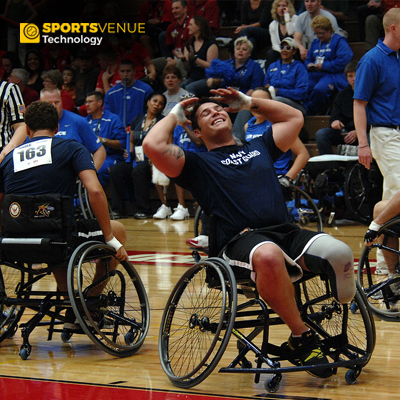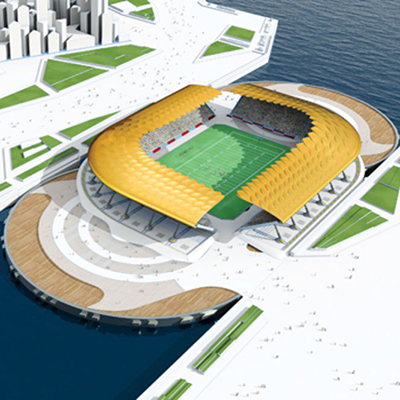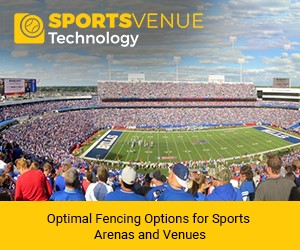Breaking Barriers: Enhancing Disability Access in the Sports Industry

Introduction:
In recent years, there has been a growing recognition of the importance of disability access in the sports industry. As sports continue to evolve, ensuring inclusivity and accessibility for individuals with disabilities has become a priority. This article explores the various aspects of enhancing disability access in sports, including key challenges, innovative solutions, and the impact on both athletes and spectators.
1. Importance of Disability Access in Sports:
Disability access in sports plays a pivotal role in promoting inclusivity and diversity within the sporting community. It goes beyond mere accommodation; it is about creating an environment where individuals with disabilities can fully engage, excel, and thrive.
Firstly, disability access enables participation in sports activities across a wide spectrum of events and levels. This includes recreational sports, competitive leagues, and elite-level competitions. By breaking down barriers to entry, disabled athletes can explore their interests, develop their skills, and pursue their athletic ambitions with equal opportunity. The benefits of physical activity are well-documented, and disability access ensures that individuals with disabilities can enjoy these benefits to the fullest extent. Regular participation in sports contributes to improved physical health, enhanced mobility, and better overall well-being. It also fosters social interactions, teamwork, and camaraderie, enriching the lives of disabled athletes both on and off the field.
Moreover, disability access in sports fosters a sense of belonging and empowerment among disabled athletes. By providing them with the tools, support, and opportunities they need, it sends a powerful message of inclusivity and equality. This empowerment translates into increased self-confidence, resilience, and a positive mindset, encouraging disabled athletes to challenge stereotypes, push their limits, and achieve their goals.
In essence, disability access in sports is not just about creating pathways for participation; it is about creating a culture of acceptance, respect, and celebration of diversity. It reinforces the notion that everyone, regardless of ability, deserves the chance to pursue their passion for sports, experience the joy of competition, and contribute to the vibrant tapestry of the sports community.
2. Key Challenges in Disability Access:
Despite significant progress, several challenges continue to impede full disability access in the sports industry. These challenges encompass physical, logistical, educational, and social barriers that hinder the inclusivity and equal participation of disabled athletes.
Physical barriers in sports facilities pose a significant challenge. Inaccessible entrances, lack of ramps or elevators, narrow doorways, and inadequate restroom facilities limit the mobility and independence of disabled athletes, making it challenging for them to navigate and fully engage in sporting activities. The limited availability of adaptive sports equipment remains a major hurdle.
Many sports require specialized equipment tailored to the needs of disabled athletes, such as wheelchairs, prosthetics, adaptive bicycles, and sensory aids. However, the cost, availability, and customization of these equipment pose barriers to access for many individuals with disabilities.
Furthermore, access to quality training programs and coaching tailored to the needs of disabled athletes is often limited. This limitation arises from a lack of specialized coaches, training facilities with inclusive design, and structured training programs that address the unique requirements of different disabilities. As a result, disabled athletes may not receive the support and guidance needed to develop their skills and reach their full potential.
Additionally, there is often insufficient awareness and understanding about disability rights, accommodations, and inclusive practices within the sports industry. This lack of awareness can lead to discrimination, prejudice, and inadequate support for disabled athletes. Educating stakeholders, including sports organizations, event organizers, coaches, athletes, and spectators, is essential to promote inclusivity and combat stigma.
Overcoming these challenges requires a multifaceted approach involving stakeholders at all levels. This approach should include infrastructure improvements to remove physical barriers, initiatives to provide accessible adaptive sports equipment, training programs for coaches and staff on disability awareness, advocacy for policy reforms, and awareness campaigns to promote understanding and acceptance of disabled athletes within the sports community. By addressing these challenges proactively, the sports industry can create a more inclusive and accessible environment for all athletes, regardless of their abilities.
3. Innovative Solutions for Disability Access:
Innovative solutions are pivotal in overcoming the challenges of disability access in sports and fostering a more inclusive environment. These solutions encompass a range of strategies that address adaptive equipment and technology, inclusive design in sports facilities, training and education programs, and policy and advocacy initiatives.
Firstly, advances in adaptive sports equipment and technology have transformed accessibility for disabled athletes. Innovations such as specialized wheelchairs, prosthetics, and sensory aids not only facilitate participation but also enhance performance, ensuring a level playing field in competitive sports. These advancements enable athletes with disabilities to showcase their skills and compete at their best, contributing to the overall diversity and richness of sporting events.
Inclusive design plays a crucial role in creating accessible sports facilities. Designing venues with universal accessibility features, such as ramps, elevators, and accessible seating, promotes inclusivity and enables spectators of all abilities to enjoy sporting events. This approach ensures that sports venues are welcoming and accommodating to individuals with varying mobility needs, promoting a sense of belonging and community engagement.
Furthermore, specialized training and education programs are essential for enhancing disability access in sports. Providing coaches, staff, and athletes with training on disability awareness, inclusive practices, and adaptive sports techniques not only improves participation but also enhances performance and fosters a supportive and inclusive sports environment. These programs empower individuals to understand and address the unique needs of disabled athletes, leading to increased inclusivity and positive experiences for all involved.
Advocacy and policy initiatives play a critical role in driving systemic change and promoting disability inclusion in sports. Advocating for disability rights, promoting policy reforms, and collaborating with governing bodies to implement inclusive policies and regulations are essential steps in fostering a culture of disability inclusion. These initiatives ensure that disability access is prioritized and integrated into the broader framework of sports governance, creating lasting impact and opportunities for disabled athletes to thrive.
In conclusion, innovative solutions encompassing adaptive equipment and technology, inclusive design, training and education programs, and policy advocacy are key drivers in enhancing disability access and fostering inclusivity in the sports industry. By embracing these strategies and collaborating across stakeholders, we can create a more accessible, diverse, and equitable sports environment for athletes of all abilities.
4. Impact on Athletes and Spectators:
Enhanced disability access in sports brings about profound impacts that extend to both athletes and spectators, enriching their experiences and fostering inclusivity within the sporting community.
For athletes with disabilities, enhanced access translates into newfound opportunities for participation and competition. It opens doors to competitive events across various levels, from grassroots initiatives to elite championships, enabling athletes to showcase their talents and skills on equal footing. This not only promotes a sense of achievement and fulfillment but also contributes to improved physical and mental well-being. Regular participation in sports enhances fitness, mobility, and overall health, while also boosting self-confidence, resilience, and a positive mindset among disabled athletes. Additionally, enhanced access serves as a beacon of inspiration for future generations of disabled athletes, encouraging them to pursue their passions, challenge stereotypes, and push the boundaries of achievement in sports.
On the spectator front, enhanced disability access creates a more inclusive and enjoyable sports experience for diverse audiences. Accessible sports venues with inclusive design features, such as ramps, elevators, and accessible seating, ensure that spectators of all abilities can partake in the excitement of sporting events. This fosters a sense of unity and community support, as individuals from varying backgrounds come together to celebrate athleticism, teamwork, and sportsmanship.
Inclusive sports experiences also promote empathy, understanding, and acceptance among spectators, leading to a more inclusive society at large.
Moreover, enhanced disability access in sports contributes to the broader societal shift towards inclusivity and diversity. It challenges perceptions, breaks down barriers, and promotes a culture of acceptance and equal opportunity. By embracing and championing disability access, the sports industry sets a positive example for other sectors, driving positive change and creating a more equitable and inclusive society for everyone.
In summary, enhanced disability access in sports has a profound and far-reaching impact, empowering athletes with disabilities, enriching the spectator experience, and promoting inclusivity and diversity within the sporting community and beyond.
5. Future Trends and Opportunities:
The future of disability access in sports is characterized by promising developments and opportunities fueled by advancements in technology, policy reforms, and advocacy efforts. These ongoing trends herald a new era of inclusivity and accessibility in the sports industry, paving the way for enhanced participation and empowerment for athletes with disabilities.
One of the key future trends is the integration of virtual reality (VR) training in sports. VR technology offers immersive and interactive training experiences for athletes, including those with disabilities. It enables personalized training programs, simulates real-life scenarios, and enhances skill development in a safe and controlled environment. VR training holds immense potential for improving performance, rehabilitation, and overall athletic outcomes for disabled athletes.
Inclusive sports events are also poised to become a prominent trend in the future. These events go beyond mere accommodation and actively promote inclusivity, diversity, and equal participation for athletes of all abilities. From adaptive sports competitions to integrated sports leagues, inclusive events create opportunities for meaningful engagement, competition, and camaraderie among athletes with and without disabilities, fostering a culture of acceptance and mutual respect.
Furthermore, adaptive gaming platforms represent a burgeoning opportunity for enhancing disability access and inclusion in the sports industry. These platforms cater to gamers with various disabilities, offering customizable interfaces, accessibility features, and adaptive controls that enable individuals to participate and compete in gaming experiences tailored to their needs. Adaptive gaming not only provides entertainment but also promotes social interaction, skill development, and inclusion within the gaming community.
Policy reforms and advocacy efforts continue to drive progress in disability access and inclusion in sports. Initiatives aimed at promoting inclusive policies, funding support for adaptive sports programs, and raising awareness about disability rights and accommodations are crucial for creating an enabling environment for disabled athletes. Collaborative efforts between sports organizations, government agencies, advocacy groups, and stakeholders are essential in shaping a future where disability access is prioritized and integrated seamlessly into the sports landscape.
In conclusion, the future of disability access in sports is characterized by innovative technologies, inclusive practices, and collaborative initiatives that hold immense potential for advancing inclusivity, diversity, and empowerment within the sports industry. By embracing these trends and opportunities, we can create a more accessible, equitable, and inclusive sports environment for athletes of all abilities to thrive and excel.
Conclusion:
Enhancing disability access in the sports industry is not just about compliance; it's about creating a culture of inclusivity, diversity, and equal opportunities. By addressing challenges, implementing innovative solutions, and fostering collaboration among stakeholders, we can break barriers and pave the way for a more accessible and inclusive sports landscape.





